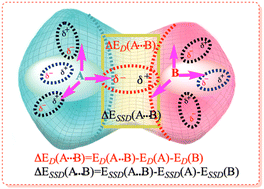DFT calculations in solution systems: solvation energy, dispersion energy and entropy
Abstract
DFT calculations of reaction mechanisms in solution have always been a hot topic, especially for transition-metal-catalyzed reactions. The calculation of solvation energy is performed using either the polarizable continuum model (PCM) or the universal solvation model SMD. The PCM calculation is very sensitive to the choice of atomic radii to form a cavity, where the self-consistent isodensity PCM (SCI-PCM) has been recognized as the best choice and our IDSCRF radii can provide a similar cavity. Moving from a gas-phase case to a solution case, dispersion energy and entropy should be carefully treated. The solvent–solute dispersion is also important in solution systems, and it should be calculated together with the solute dispersion. Only half of the solvent–solute dispersion energy from the PCM calculation belongs to the solute molecules to maintain a thermal equilibrium between a solute molecule and its cavity, similar to the treatment of electrostatic energy. Relative solute dispersion energy should also be shared equally with the newly formed cavity. The entropy change from a gas phase to a liquid phase is quite large, but the modern quantum chemistry programs can only calculate the gas-phase translational entropy based on the idea-gas equation. In this review, we will provide an operable method to calculate the solution translational entropy, which has been coded in our THERMO program.

- This article is part of the themed collection: PCCP Reviews


 Please wait while we load your content...
Please wait while we load your content...